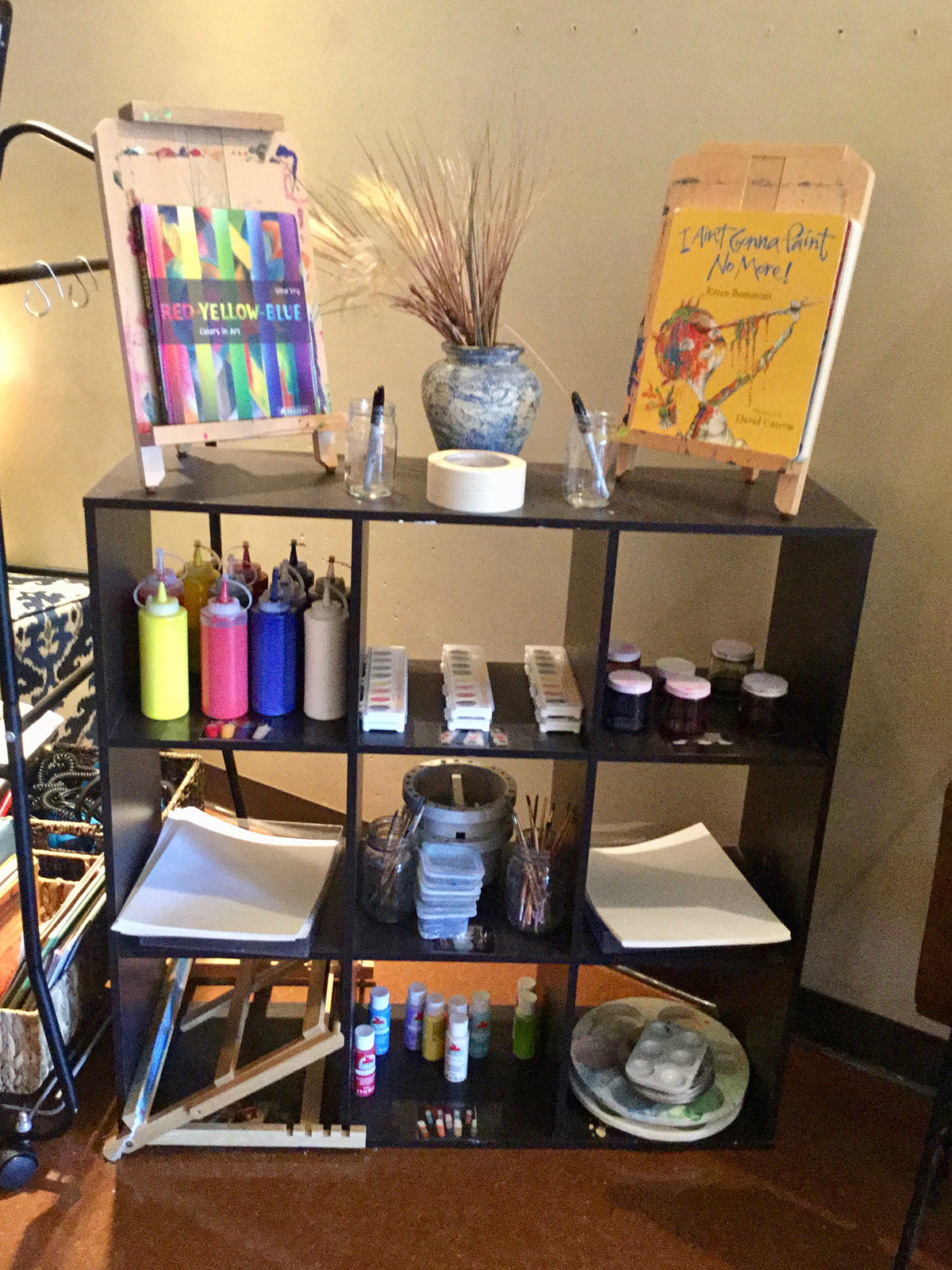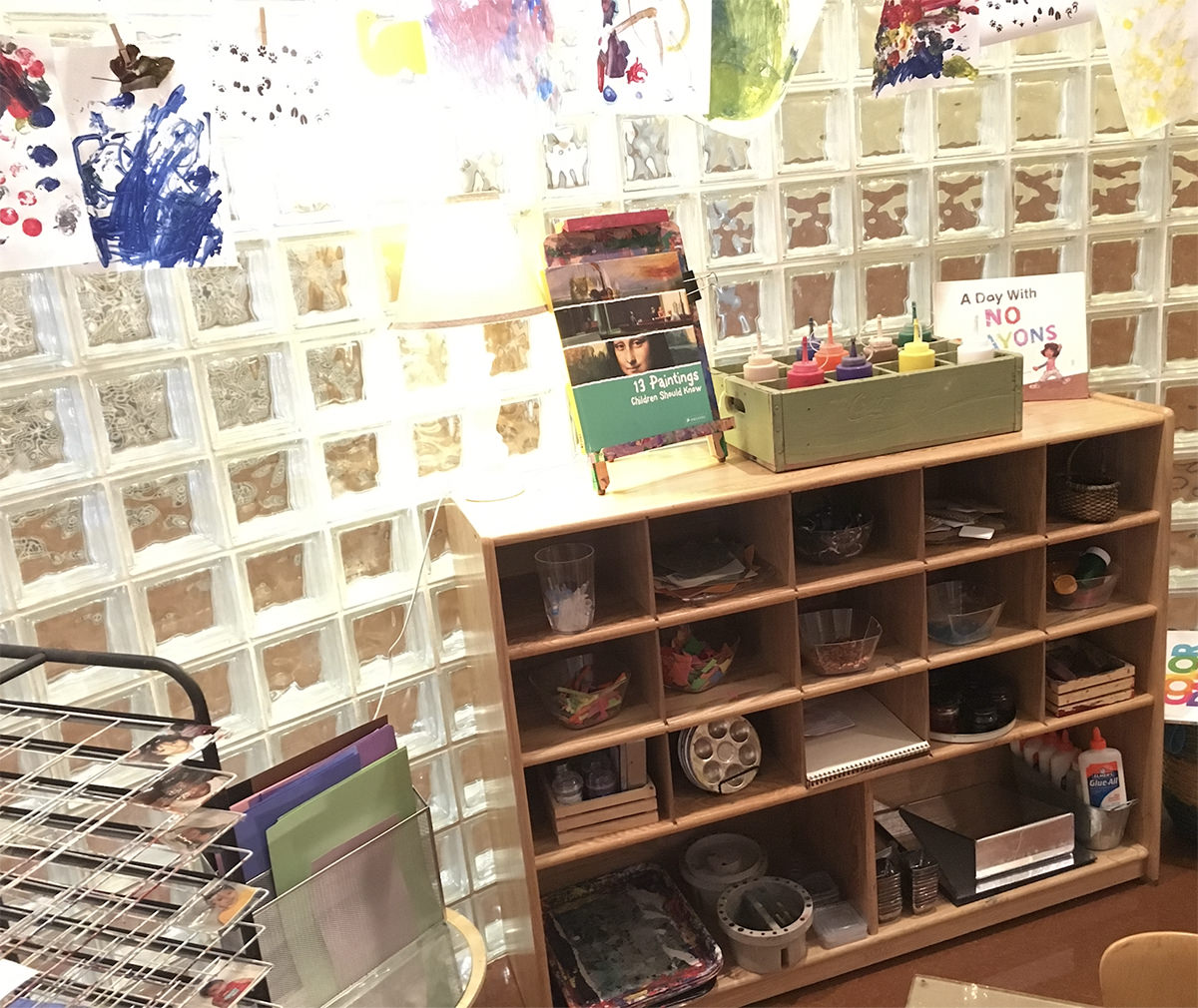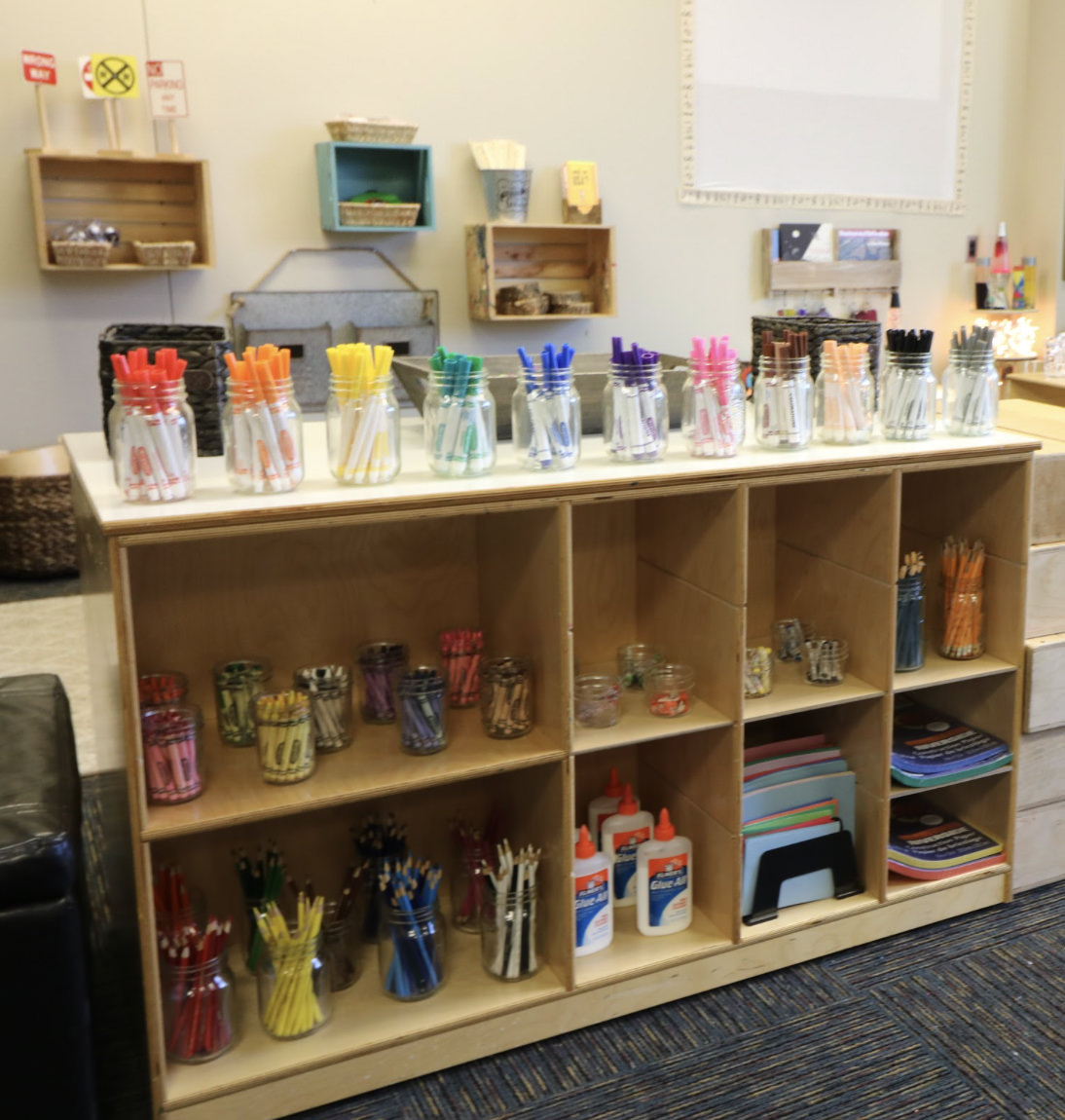Do you feel you do not have the space in your classroom for an atelier? All it takes is one shelf. You could call it a mini-atelier.
The word “Atelier” comes from the French word meaning the studio or workshop.
It is a place for children to create, imagine, play and construct.
An atelier is a space dedicated to providing children materials for original thinking and art making. It is an opportunity to share special techniques of art making with children so that they have more access to expressing their ideas and thoughts. .
What is the difference between an atelier and an art center?
Atelier is more of a laboratory for creative exploration. When you think of your atelier as a place for children to research and experiment – it is not so much about the making of an art “product” as it is about the discovery of mediums and materials as a means to expressing ideas.
An art center can certainly be this.
But historically – it has been a place to create an end product. The word “Atelier” reminds me of the intention of the space. An atelier can be a way of approaching problems and creating solutions. It can be a place of experiencing wonder. It can become a dialogue between materials and the children. It can be an expansion of the way children communicate their feelings and ideas.
Is a shelf enough?
As a public school teacher, there were times I felt confined by my small classroom. Looking at the wondrous ateliers of Reggio Emilia – I felt I could never provide this kind of experience for my students.
But as a practicing artist (I went to art school before becoming an educator) I knew creative materials could make a huge impact on children's self-expression. Something was better than nothing. I am not in Reggio Emilia. I am where I am. I create from my place, my space, my time.
Start small and keep it simple.
What are the children drawn to? Painting? Mark making? Building?
One shelf ateliers are living, changing spaces. They are not stagnant. Each of these one shelf ateliers can have new materials appear as the children expand their ideas and exploration.
Be willing to move and change what the shelf offers according to the children's interests.
Below are three very simple one shelf ateliers.
The Color Atelier
This educator has provided:
Top shelf:
- Books about painting and color
- Sharpie pens
- Masking tape.
Second shelf:
- Tempera paint in squeeze bottles.
- Watercolor pan sets.
- Liquid watercolor in jars.
Third Shelf:
- White construction paper
- Paint brushes in assorted sizes
- Rinsing pots
- Watercolor paper
Bottom Shelf:
- Painting easel
- Craft acrylic paint
- Paint palettes
The Collage Atelier
This educator has provided:
Top shelf:
- Inspirational books
- Tempera in squeeze bottles
Second shelf:
- transparent plastic pieces
- Fabric scraps
- Ribbon
- Cardboard scraps
- Pompoms in basket
Third Shelf:
- Cut-up neon straw pieces
- Foam scraps
- pebbles
- Blue sea glass
- Plastic caps and containers
Fourth Shelf:
- Assorted colors of glitter in shaker bottles
- Paint palettes
- Drawing paper
- Liquid watercolor in baby food jars
- Paint stamping blocks
Bottom Shelf:
- Painting trays
- Rinsing buckets
- Paint brushes
- Collage cups (for collecting bits and pieces)
- Mirrors
- Glue
Mark Making Atelier
The educator provided:
Top shelf:
- Mason jars of colored markers, sorted by color
Second shelf:
- Jars of color sorted crayons
- Baby food jars of oil pastels
- Jars of assorted graphite pencils
Third shelf:
- Jars of colored pencils
- Glue
- Assorted colors of construction paper
The three main steps to setting up a one shelf atelier:
There are three main elements I feel are important to setting up an effective atelier.
Set up the materials with attention and care. Arrange the materials with beauty and intention. Does the shelf invite participation? Does the arrangement beckon you to touch? Do the children naturally navigate to it? Are the materials easy to access and use?
Provide quality materials and tools. When you can – buy high quality. For example, cheap watercolors produce weak colors. Paint on thin paper weakens the paper. Test the materials to experience the journey they provide. Is it satisfying? Do they bring curiosity and wonder as you explore? If they are not engaging you – how do you think they could possibly engage the children?
Look beyond the typical. Provide unexpected materials and resources. Think beyond the typical early childhood art center. For myself – thinking of it as a laboratory for children to research and experiment helps me move beyond the traditional view of the art center and into a more dynamic space.






I love this explanation. We are working to create an Atelier in our school- this is a great, simple, explanation that makes it OK to have “just a shelf” to start with. THANK YOU!!!